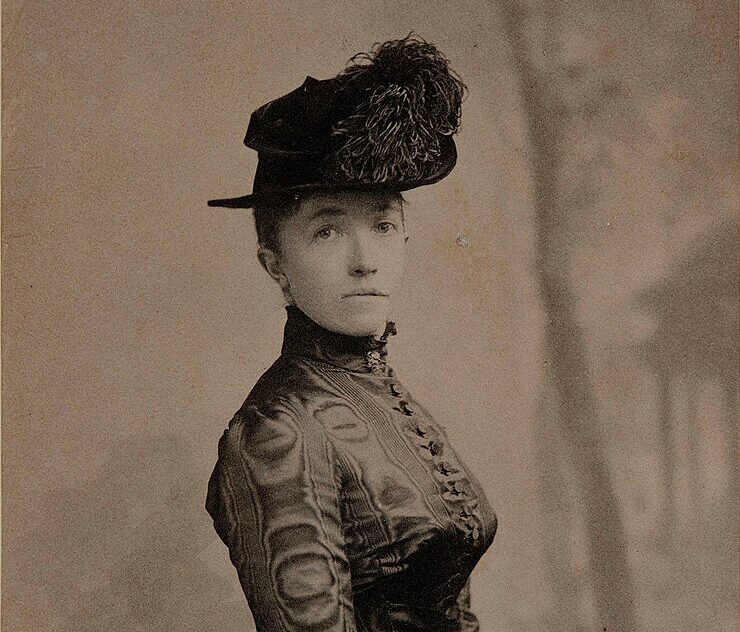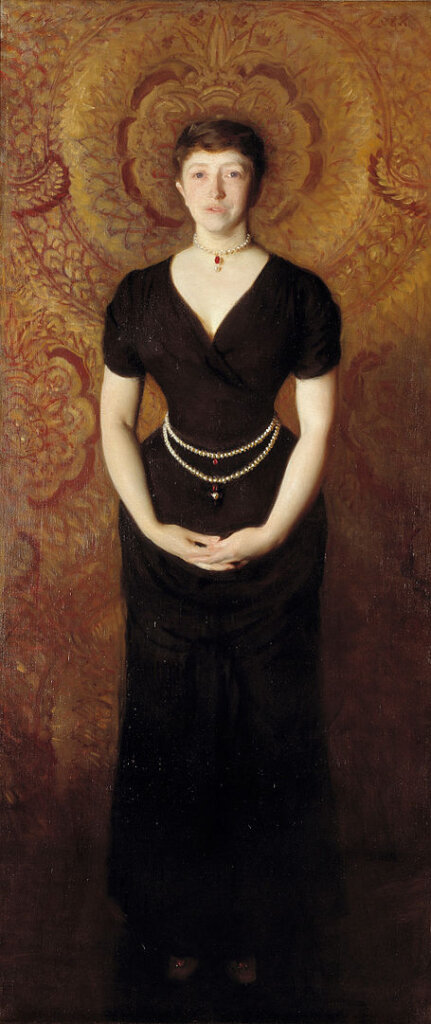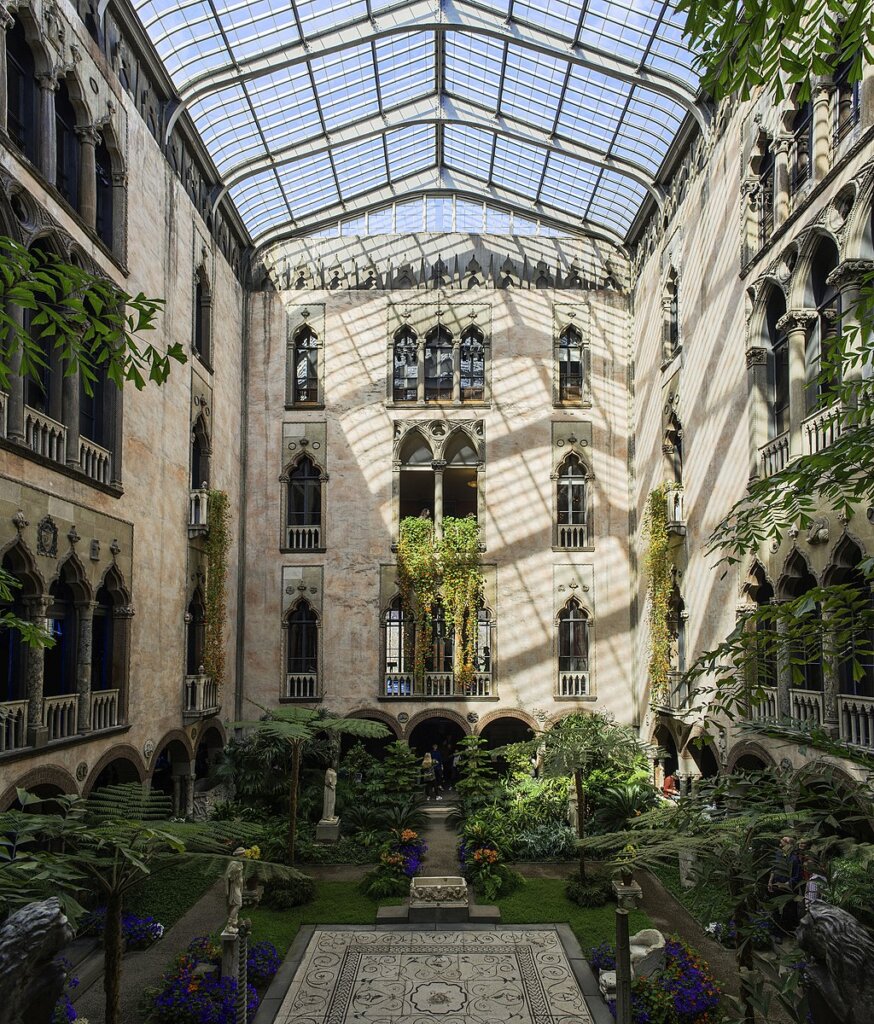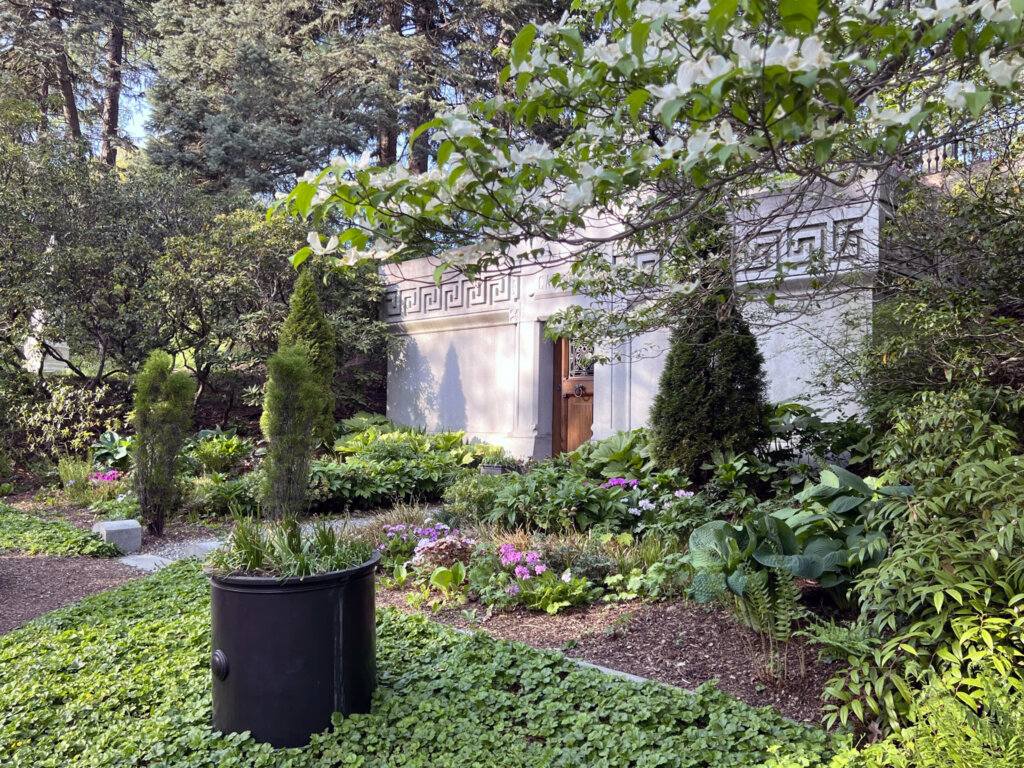
Isabella Stewart Gardner (1840-1924)
Collector and Patron of the Arts, Philanthropist
One of Boston’s most famous art collectors, and the creator of her namesake museum, Isabella Stewart Gardner was born in New York City on April 14, 1840.
A descendant of Robert Bruce and Mary Stuart, Gardner was born to Adelia Smith and David Stewart. At the age of 14, she was sent to finishing school in Paris where she met Ida Agassiz Higginson (Lot 1438, Columbine Path) and Julia Gardner Coolidge (Lot 938, Heliotrope Path). Isabella visited Julia in Boston in 1859 and met Julia’s brother, John “Jack” Gardner; following a short engagement, the couple married on April 10, 1860.
In 1863, Gardner gave birth to a son who died of pneumonia two years later. The death left her depressed and withdrawn, and upon the insistence of her doctor, she traveled to Europe with her husband. The voyage restored her spirit and sparked her interest in Parisian fashions and European art. In the mid-1860s, Jack’s brother died and named the Gardners as guardians of his three sons. Gardner took an interest in their future educations and enrolled in the Harvard Annex, attending lectures by notable fine arts professor Charles Eliot Norton (Lot 712, Thistle Path). She expanded her involvement in the arts and became notorious for her flamboyant gestures (wearing a walnut-sized diamond in her hair, and even walking a lion down Boylston Street), which made her a constant presence in the press.

As a patron of the arts, Gardner became close friends with poet Julia Ward Howe (Lot 4987, Spruce Avenue), author Oliver Wendell Holmes (Lot 2147, Lime Avenue), author Henry James (Cambridge Cemetery), and artist John Singer Sargent. A lecture on the far East by Professor Edward Morse prompted her to travel to Japan in 1883 with Japanese art-collector, William Sturgis Bigelow (Lot 310, Catalpa Path). In 1888, Sargent painted Gardner in a fitted, low-cut dress; the image was so controversial that when published in the newspaper, Jack Gardner demanded it not be displayed for the duration of his life.
Gardner’s father died in 1891, leaving her 1.75 million dollars to expand her art collection; five years later, she purchased a self-portrait of Rembrandt and Titian’s Rape of Europa. Her art collection began to outgrow her home, and she consulted with architect Willard T. Sears (Lot 5465, Excelsior Path) about building a new structure to house her art. In 1898 Jack Gardner died, leaving his wife most of his estate to pursue her museum plans. That same year, Gardner bought land in the Fenway before the rest of the area had even begun to develop. She created the “Fenway Court,” which later became the Isabella Stewart Gardner Museum, and designed the museum seal with artist Sarah Wyman Whitman (Lot 6084, Indian Ridge Path). It bore the image of a phoenix with the motto “C’est mon plaisir” (It is my pleasure). Gardner lived on the fourth floor of the museum and installed artwork for most of the next year.

The Museum opened to the public on February 23, 1903, and the collection continued to expand over the next ten years. In 1919, Gardner suffered a stroke and lost the ability to walk. She appointed Morris Carter, assistant director of the Museum of Fine Arts, as the director of her museum and mandated that the permanent collection must remain as it was in perpetuity. On July 7, 1924, while driving around Boston, she suffered another stroke and died ten days later. She was buried at Mount Auburn in the Gardner family tomb with her husband and son near Auburn Lake.

Isabella Stewart Gardner is buried at Mount Auburn in Lot #2900, Oxalis Path.
Footnotes:
Adapted from the research of Jill Gabroski, as published in Mount Auburn’s April Birthday: Isabella Stewart Gardner, 2005.
